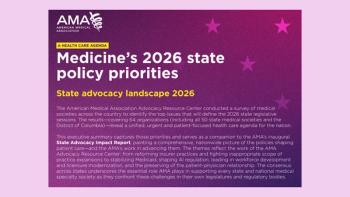
Owning quality can boost cath lab staff morale
Cath lab operators feel like someone is always looking over their shoulder, but leaders offer reasons for optimism.
With public and administrative scrutiny rising and patient volumes and reimbursement falling, it’s no wonder that poor morale was a topic discussed at a catheterization laboratory leadership symposium held April 3 at the American College of Cardiology’s (ACC’s) 65th annual Scientific Session and Expo in Chicago.
In the cath lab, cardiologists perform diagnostic tests, repair hearts and open clogged arteries without surgery using stents and balloons. There is a sense, however, that the field has lost standing in the public because of unscrupulous operators who performed unneeded procedures or inserted stents when there was no benefit.
“One of the things that occurred is that we’ve treated the cath lab like a widget factory,” Robert Applegate, MD, professor of cardiology at Wake Forest University, Winston-Salem, North Carolina, said at the program, which was jointly sponsored by the Society for Cardiovascular Angiography and Interventions (SCAI).
“There has been a huge economic crunch on cath labs,” Applegate said. “The decline of cath lab profitability has led to scrutiny.”
Scrutiny is coming from hospital administrators, government regulators and the public. Charles Chambers, MD, with the Penn State Hershey Heart and Vascular Institute, noted how personal-injury attorneys advertised in Baltimore with billboards stating “If you had a stent, call this number.”
Applegate noted how the poor economy led to layoffs which further deteriorated morale. During the economic downturn, he said “the first thing to be cut was personnel.”
But Kirk Garratt, MD, associate medical director of Christiana Care’s Center for Heart & Vascular Health of Wilmington, Delaware, offered optimism.
A 17-year veteran of the Mayo Clinic in Rochester, Minnesota, and most recently, the director of cardiac intervention with New York’s Northshore-LIJ system, Garratt joined the new Christiana center last November.
He described how most healthcare systems consist of a series of silos ̶each fiercely guarded by a department head. But the service lines of his center overlap into the departments of medicine, surgery and radiology. Instead of being dominated by turf battles, Christiana’s center shares common support areas, materials and human resources. Goals are aligned, communication is “seamless,” and clinical activities are coordinated, according to Garratt.
Multidisciplinary process improvement teams including cardiologists, nurse practitioners, pharmacists, emergency department providers and patients have helped create a “well-oiled machine,” that has resulted in higher moral and superior quality.
“I’m convinced service-line approach avoids traditional land mines and traditional silos,” Garratt said, adding that it also makes the manager’s job easier as a result.
Conflicts inevitable
James Blankenship, MD, director of the cardiology department at Geisinger Medical Center in Danville, Pennsylvania, talked about his 15 years as a cath lab director and the balancing act it entails.
Discussing conflict resolution, Blankenship said that conflict is inevitable and, in some sense, especially through competition, it can be a positive force, “but it can destroy careers.”
As a lab director, Blankenship said he has to do things that he didn’t think he’d have to do, like tell people not to swear at co-workers.
In addition to resolving conflicts between staff members, there are conflicts between staff and patients that he has had to resolve. Blankenship, who is also SCAI president, revealed his secret.
“Treat them special, like they’re your only patient, and give them hope to see a better future,” he advised. “Thank them for the complaint and tell them how you will make a change based on their complaint.”
Chambers, Blankenship’s predecessor as SCAI president, encouraged attendees to embrace quality-improvement efforts. It’s not enough to analyze adverse events, Chambers said. Labs should do random case reviews to make sure they’re doing things correctly. The data uncovered shouldn’t be viewed ammunition for criticism, but as opportunities for improvement, Chambers explained.
“Why do it?” Chambers asked. Because it’s “better for society.” and because somebody is watching, he added, referencing the Baltimore billboards.
“If you don’t get on the quality bandwagon, there are going to be issues,” Chambers said, noting that there is no turning back from the move to tie payment to quality and outcomes.
Garratt gave this further emphasis on this point noting that many doctors think quality-improvement initiatives are “horse manure.” If that’s your attitude, Garratt said “I’ve got bad news for you, you’re the problem.”
Newsletter
Stay informed and empowered with Medical Economics enewsletter, delivering expert insights, financial strategies, practice management tips and technology trends — tailored for today’s physicians.








